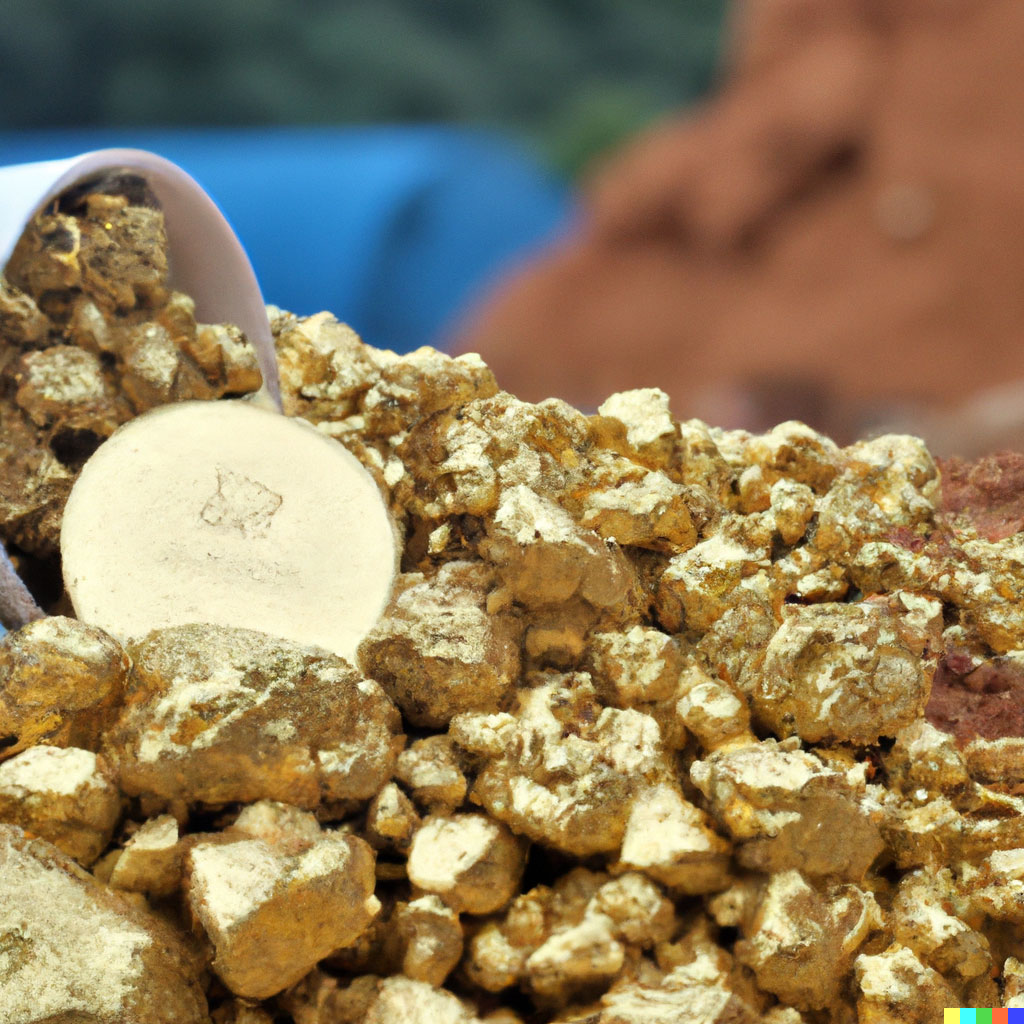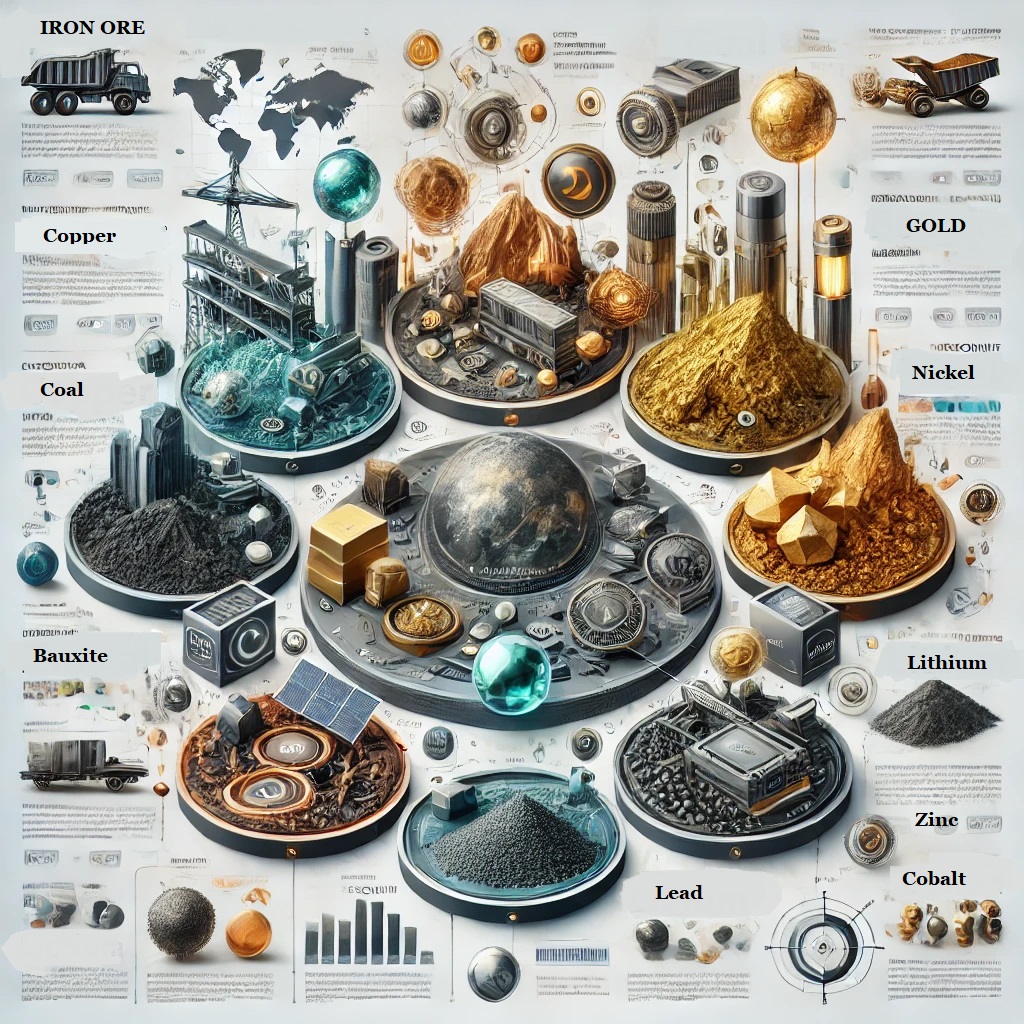Gold mining consists of the processes and techniques employed in the removal of gold from the ground. Earlier gold was mined using different methods like Panning, cradling, dry blowing, shaft mining, Puddling and dredging. Nowadays open cut mining and underground methods are used for gold mining.
Panning is one of the oldest techniques of separating gold from rock. Gold panning technique was introduced by Isaac Humphrey at Coloma in 1848. Also Mexicans developed panning technique in their country, using a flat dish called a batea. Gold panning was slow even for most skillful miner. In a single day, one miner was able to wash only 50 pans in 12 hour workday and obtain only a small amount of gold dust. This method was the most common method of mining on the goldfields. Rocky material was loosened with pick and shovel. After it had been broken down, this rocky material was taken by wheelbarrow to a creek where it was carefully washed and swished around a shallow metal pan. As the water separated the particles of dirt, rock and pebbles, small deposits of gold sank to the bottom of the pan. This was successful for yielding small nuggets. A persistent prospector could find a considerable amount of gold over time.
Cradle (Rocker): This method was introduced by Isaac Humphrey. Cradling involves a wooden box with a handle on one side and a ridged bottom covered with Hessian cloth. Large pieces of rock were sorted through and discarded if they did not yield any gold. Finer rocks and pebbles were then washed with creek water across the ridges in the bottom of the cradle. This method was more successful then panning in that it meant that greater amounts of gravel and dirt could be examined.
Dry blowing: This method was not very effective. This method was adopted in some parts of Australia like Kalgoorli in Western Australia. In this method two pans were used. Fine, dust like material was poured from a pan held high, into the second pan which was positioned on the ground. As the material was poured down, the wind blew away the dust and fine particles of rock, while the tiny nuggets of gold fell into the pan below. While the method was sound in theory, the winds meant that tiny particles of gold could be blown away with the rest of the dust and dirt.
Shaft mining:
One of the popular methods was shaft mining. To find gold from underground, miners dug a shaft of up to 50 meters deep. Most of the miners were equipped for pick and shovel, so this was considered a long and tiring task. This method was adopted when prospector was confident that there was gold in a particular place. It was very difficult to find gold in older days, because there was no proper mining equipment. Discovering gold was more a matter of luck than good judgment.
Puddling:
This method was used to separate gold from clay. Small amounts of clay were dumped in a large container and were filled with water. As it was stirred with wooden stake, clay would dissolve and gold particles would sink to the bottom. Like other methods, even this method did not yield huge amounts of gold, but they were able to get a reasonable amount of gold.
Dredging:
In this method, a huge bucket would be placed in front of the dredge which would scoop vast amounts of sediment from the river bed. This method would then be carefully sifted and sorted. After the sifting was completed, waste material was returned to river bed.
Open cut mining:
In this method, rocks that are on surface are removed and moved to another place. Over a period of time, the mine is excavated in a series of layers, known as benches. Mining company does take safety measures at regular intervals within the mine to reduce the risk of rock falls. Benches allow trucks and other large vehicles to enter the site and allow drilling and ore sampling at different levels. The rocks that are removed with the help of machines are crushed and sifted through for gold. This method is very profitable because the removed rocks will at least have three to four grams of gold per tonne.
Drills and explosives are used to break the rock. Explosives like ammonium nitrate are used to break the rock. It causes less damage to nearby areas.
Underground Mining:
In underground mining, gold is found below the surface. This method is very costly and cause dangers to mine workers. In this method, a shaft is sunk into the ground which would be 1000 meters deep. Horizontal tunnels, known as stopes are dug at various depths and the miners work along these to access the gold.
Vehicles gain access to the various levels of the mine through a spiral tunnel known as a decline. As mineshafts become deeper, the risk of cave-ins or collapses increases. Underground mines operate under strict safety protocols. These include the way the mineshafts are dug and constructed, the methods of support for the walls and ceiling of the mine and the use of special machines to provide adequate ventilation and lighting.










